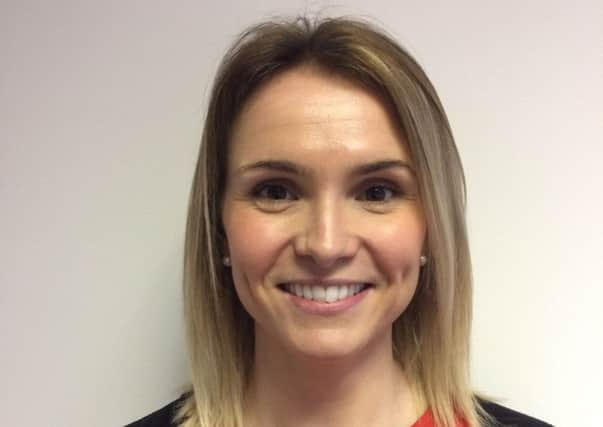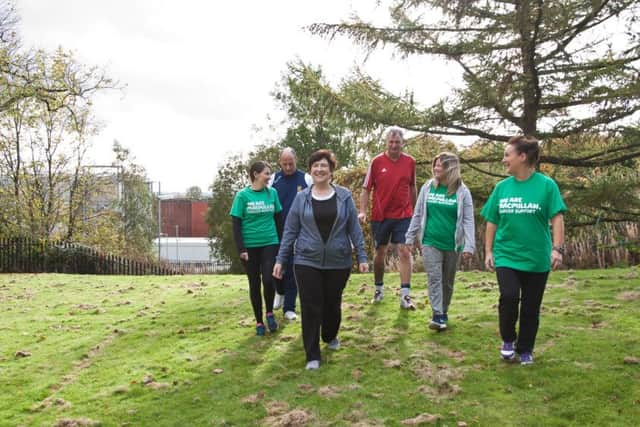Step by step on the road to wellness


Fatigue is one of the most common side effects of cancer treatment and is also one of the most debilitating. Often, all people want to do is stay in bed. This in turn can lead to individuals feeling isolated and alone.
Paths for All is working with Macmillan Cancer Support to change this by inviting cancer patients to take part in a new digital pilot project which will help them become more active.
Advertisement
Hide AdAdvertisement
Hide AdTraditionally cancer patients have been told rest is best, but research by Macmillan has shown that being active during and after treatment can improve physical and emotional health as well as helping to minimise the side effects of treatment.


The GetActive project is being piloted in Edinburgh and Aberdeen in partnership with Edinburgh Leisure and Sport Aberdeen as part of Macmillan’s physical activity programme Move More.
Participants in the Move More programme can choose from a range of activities designed for people affected by cancer, including walking groups gentle movement classes, circuits-based activity classes and gardening.
The new service will enhance this programme by providing people with a wearable tracking device so they can manage and improve their physical activity levels outside of classes.As well as being open to existing Move More participants, Get Active will also be available to those who want to get active without attending classes.
While the Move More group classes can help reduce loneliness and isolation by providing an opportunity to get together with others who have gone through a similar experience, they aren’t for everyone. It could be that someone who has had a diagnosis of cancer isn’t ready to join a group class during or immediately after treatment.


Or it might be that the type of class on offer doesn’t interest them, or it is held on a day and time that doesn’t suit.
Whatever the reason, GetActive offers an alternative option for getting back into physical activity.
And the benefits of doing it through the Move More programme, rather than just using a personal device to track activity, is that it offers much-needed support and motivation.
Advertisement
Hide AdAdvertisement
Hide AdParticipants are given a wearable tracking device, developed by social enterprise Storm Health, which allows them to track their steps.
This information is automatically synchronised through an Android or iOS app and uploaded to a customised physical activity platform for logging, monitoring and reporting physical activity.
The Move More staff then use the data to support and motivate participants to feel the benefits of being more physically active.
After signing up to the programme, people are given access to the service for a year. The aim is to empower those living with cancer to manage and improve their levels of physical activity over the full 12 months. As well as monitoring levels of physical activity, users will be able to set step count targets in a bid to increase their activity over time. If walking isn’t their choice of activity, they can add other activities on the webpage and set personal targets for them instead.
A Move More Coordinator will always be on hand to ensure they don’t do too much physical activity, as well as ensure they are doing enough activity.
The device, which has already been tested as part of other physical activity programmes, is very easy to use. The wearer simply has to remember to put it on their wrist or belt daily, and then open the app to synchronise it every couple of days. The only requirement is that they have access to the internet via a computer, tablet or smartphone.
Participants who are already using it have reported feeling more motivated to get out and exercise. By setting weekly targets, it has also inspired them to increase their level of physical activity.
The best thing about it is that it can be adapted to any level of fitness, so whether you’re an exercise fanatic or someone who has never been inside a gym, the programme can be adapted to meet your needs.
Advertisement
Hide AdAdvertisement
Hide AdIt’s not about running marathons, it’s just about taking small steps to get out and active.
If you would be interested in taking part in the GetActive pilot project, contact Move More Edinburgh on 0131 458 2190 or [email protected] or contact Move More Aberdeen on 01224 047925 or email [email protected]
Emma Berry, Senior Development Officer at Paths for All